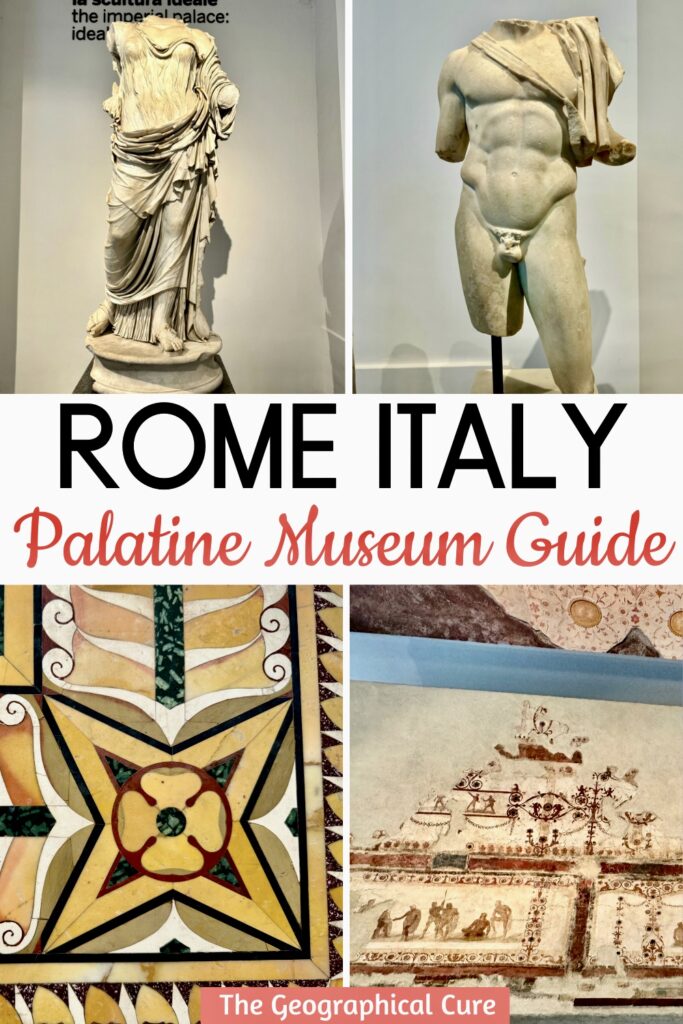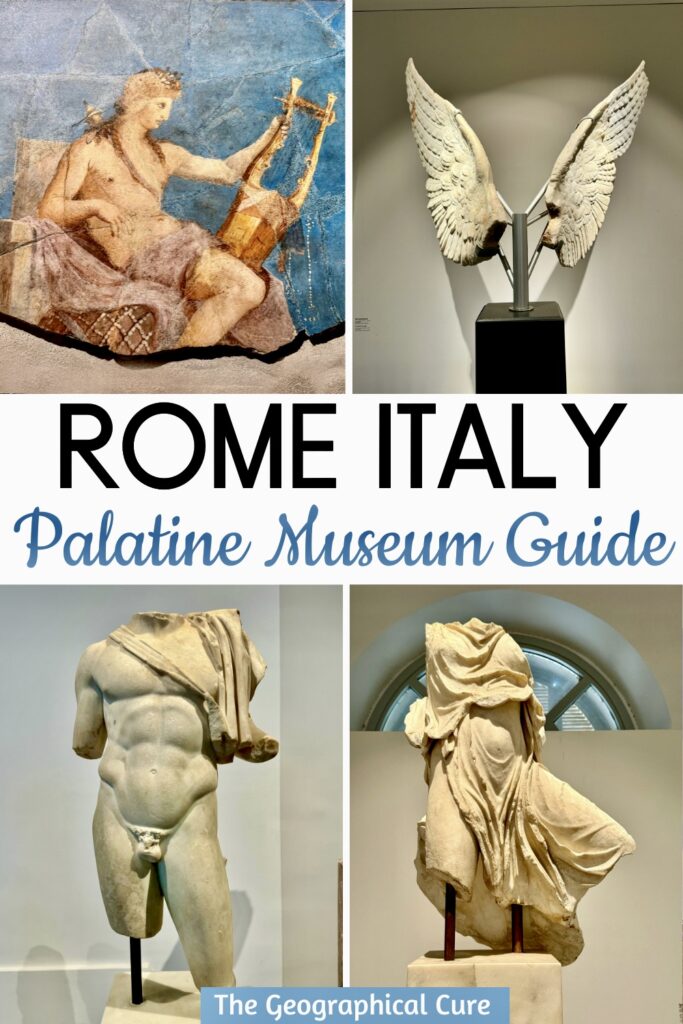The Palatine Museum is a niche archaeological museum that documents the history of the Palatine Hill.
It’s a small but mighty museum, offering a window into the heart of the ancient city. A place where history and mythology intertwine to tell the story of Rome’s foundation and imperial splendor.
I simply love small archaeological museums like this!
This Palatine Museum guide will walk you through the museum’s impressive collection of artifacts. I’ll give you an overview of the museum and identify the must see artworks that paint a vivid picture of Rome’s illustrious history.
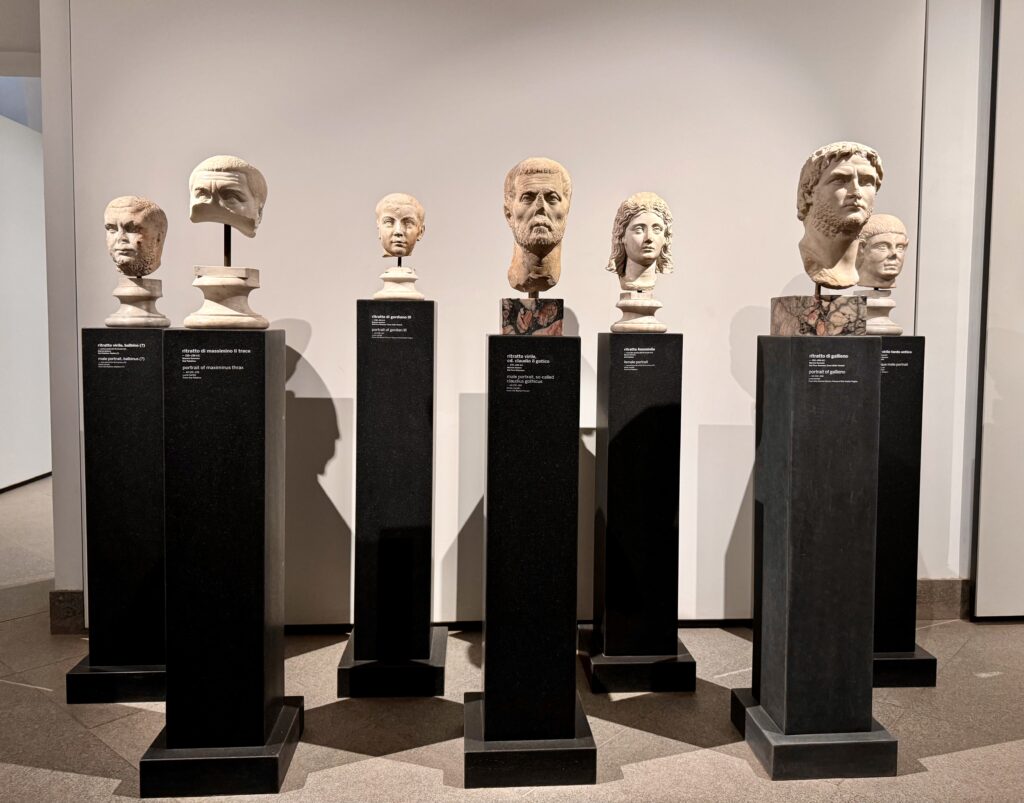
Overview Of The Palatine Museum
The museum is spread out over two floors, offering a complete historical and artistic guide to Palatine Hill.
The basement contains exhibits on the prehistory of Palatine Hill, the birth of Rome, and the Roman Republic. The first floor contains exhibits from the beginning of the Principate (the rule by emperors) and rise of the Roman Empire.
Here’s a quick breakdown of what you can see in each themed room:
- Room 1: origin of Rome
- Room 2: Monarchy to the Republic
- Room3: Republic: houses & temples
- Room 4: Principate
- Room 5: Roman Empire
- Room 6: Augustus room
- Room 7: Nero: Domus Transitoria
- Room 8: Flavian Palace: architecture
- Room 9: Flavian Palace: portraits
- Room 10: Flavian Palace: ideal sculpture
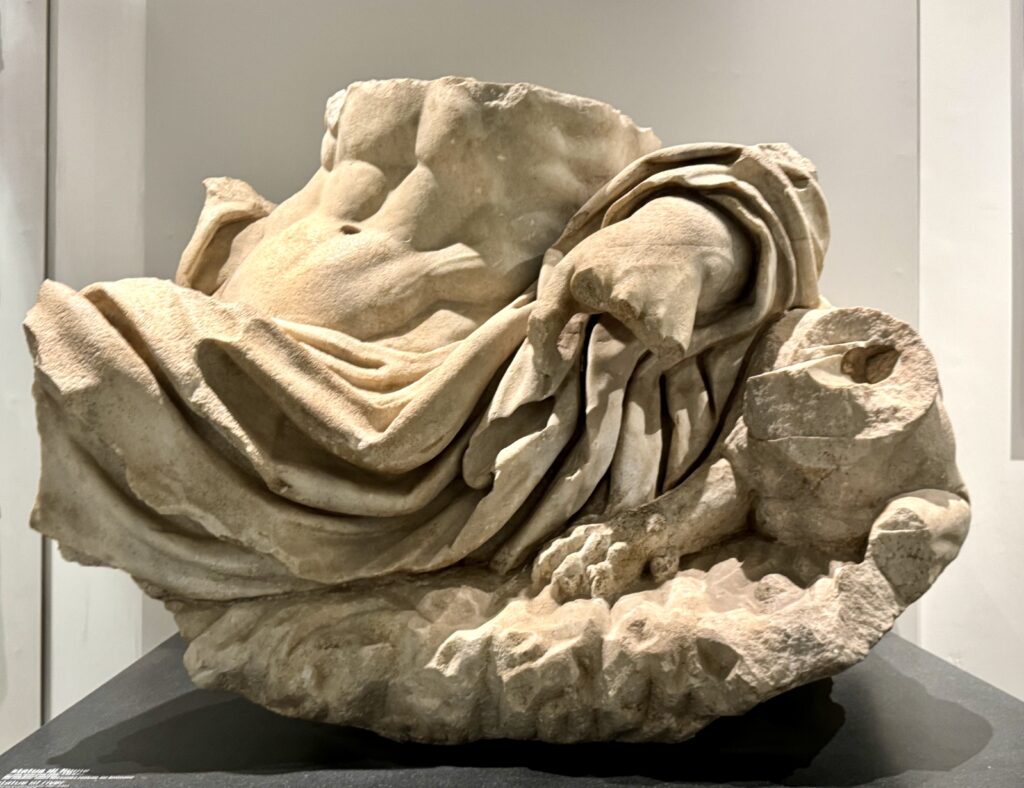
Unfortunately, you can’t buy an individual ticket to the Palatine Museum. It’s part of the bundles of sites that are included in the SUPER ticket, which I highly recommend getting!
You can check out my guide to the SUPER ticket to see what other sites it covers. You can pre-book a SUPER ticket on Viator or on the Coop Culture website.
Mini History Of The Palatine Museum
The first iteration of the Palatine Museum popped up in 1862, tucked into a quaint building within the Farnese Gardens. However, by 1883, this building was no more, torn down. This led to a long hiatus before the museum found a new home.
Fast forward to 1938, and Alfonso Bartoli steps in, breathing life into the museum once again. He chose the old Convent of the Visitation for its location, a place with its own historical layer as it sits atop the remnants of Domitian’s Palace.
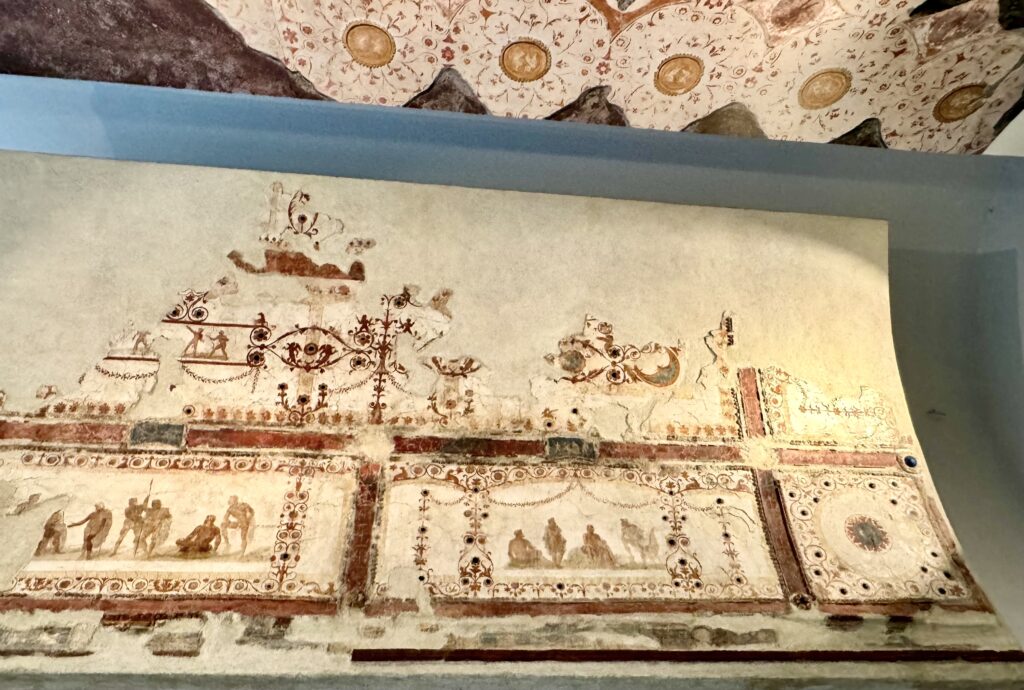
Today, if you venture down to the basement levels —specifically rooms 1, 3, and 4 — you’ll see the remains of two elliptical nymphaea.
During World War II, many artifacts from the Palatine were moved to the underground storage spaces in the Palazzo Massimo and Diocletian’s Baths for safekeeping.
After the war, only parts of the original collection made its way back to the Palatine Museum. Later, more artifacts were returned.
Still, the museum retains some very nice specimens. It’s undergone several reorganizations and renovations, the most recent major update bringing it to its present form in 1997.
Throughout its existence, the museum has consistently updated its collection and displays, integrating the latest finds from ongoing digs on Palatine Hill and incorporating the newest research.
Tip: I highly recommend this PhD guided tour of Palatine Hill. You’ll get into all sites on Palatine Hill.
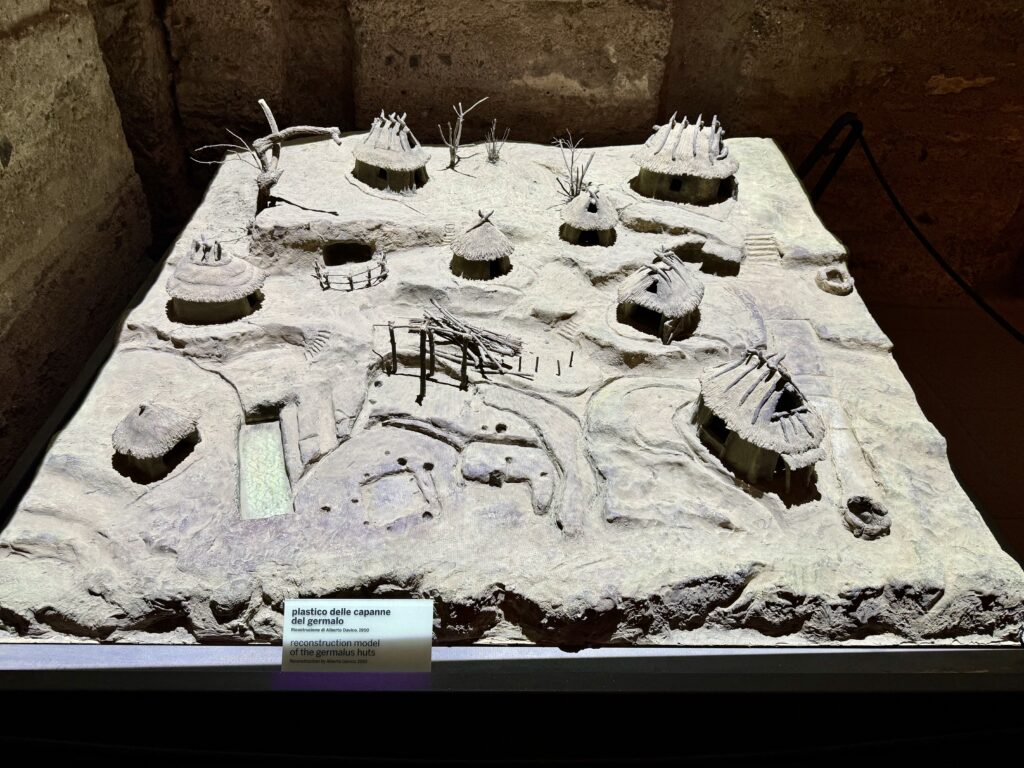
Guide To The Palatine Museum: What To See
Here are the must see highlights of the museum:
Model of Iron Age Village
In the first room, You’ll find a model of the 8th century Iron Age village of Germanus. You’ll see the Huts of Romulus in the center.
A light and sound audiovisual gives you a mini history of the village and identifies the parts of it. Over time, the village had a sacred and cultic nature. It was where the Temple of Magna Mater and the Temple of Victory were built.
On this level, you’ll also see a collection of vases, terracotta vessels, primitive weapons, and tools.
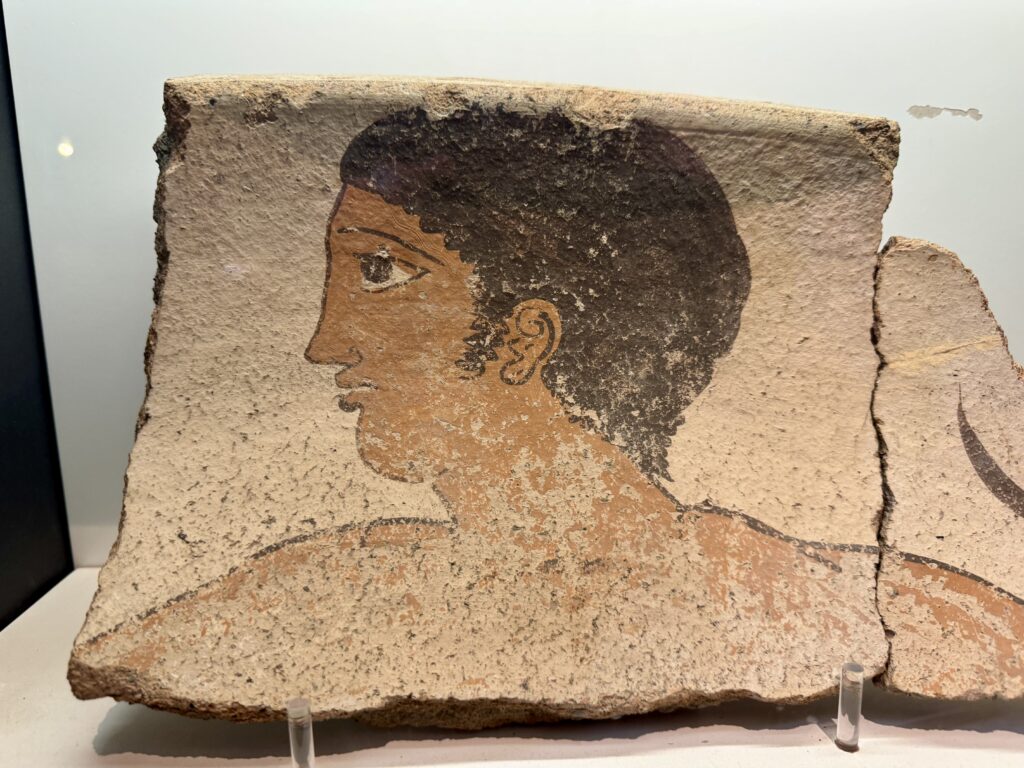
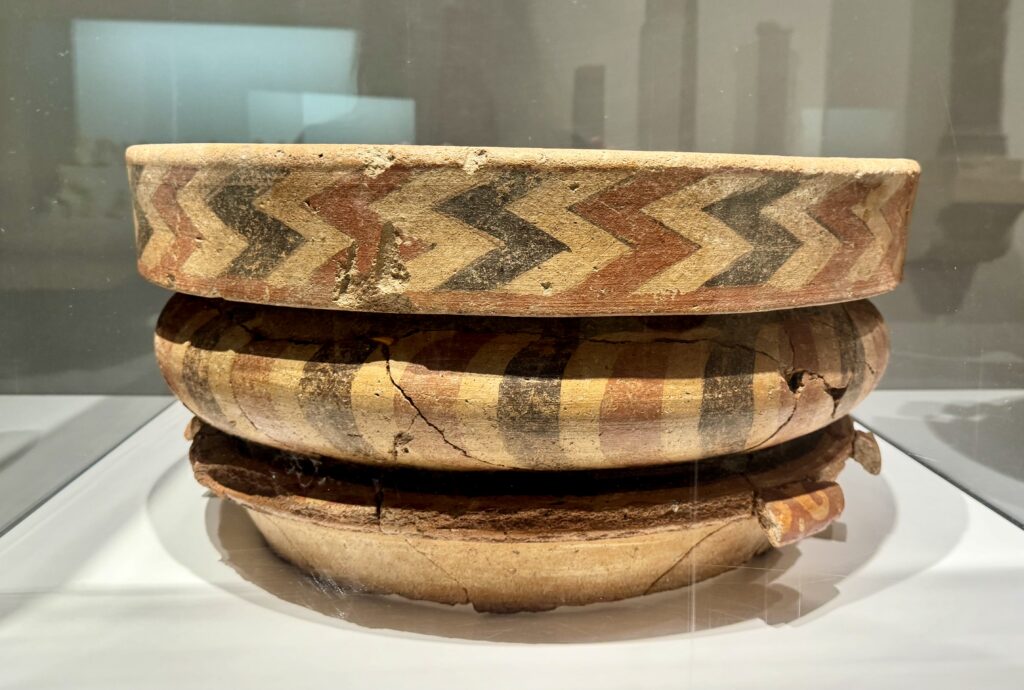
Magna Mater Sculpture
Head upstairs and in the hallway, you’ll see a series of sculptures.
The most impressive is the ancient sculpture shows Magna Mater, the Great Mother, on their throne. This goddess brought life and fertility to the Roman people.
Her arms and foot were destroyed over time. And there was always a cavity where her head should be. This was a standard Roman device in which interchangeable heads could be inserted.
In this case, her head was actually a black cone-shaped meteorite that caused astonishment when it fell from the sky.
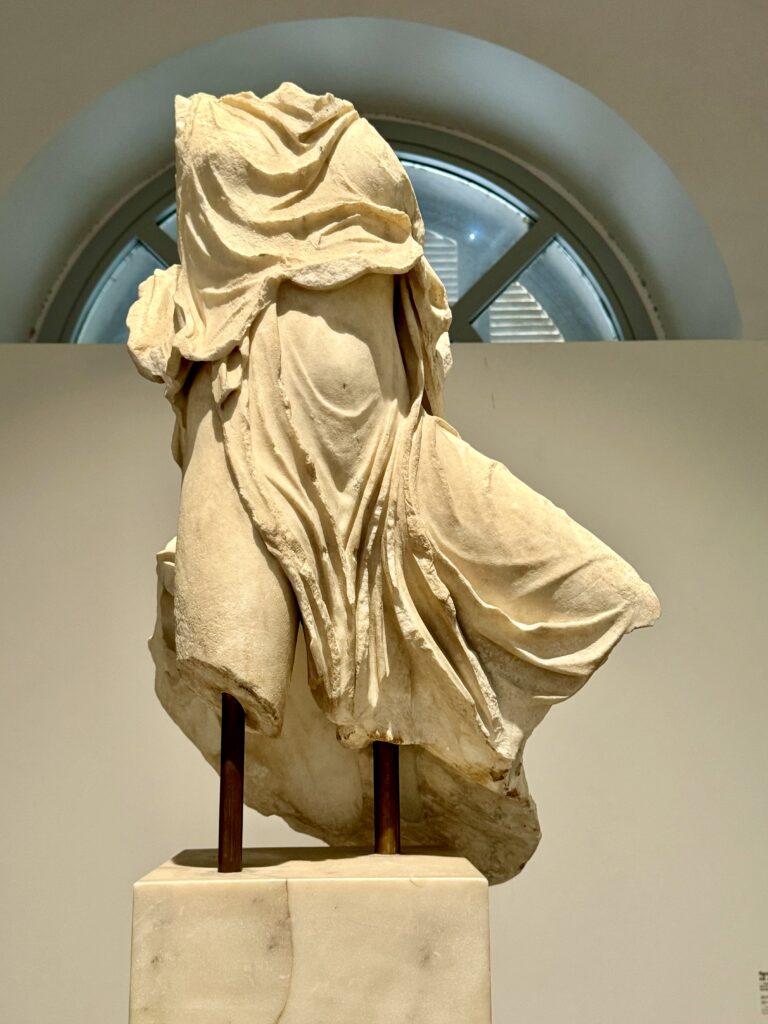
More Sculpture
There is a veritable wealth of sculptures on the upper floor.
The imperial palaces on the Palatine were home to an exceptional number of artworks, both original Greek pieces brought to Rome by Augustus and Nero and Roman copies of famous creations.
They definitely give you a sense of the taste and artistic interests of those who lived on the Palatine.
One of the only Greek objects on display is Aura, shown above. She stands out even among the fine works of the Roman marble sculptors.
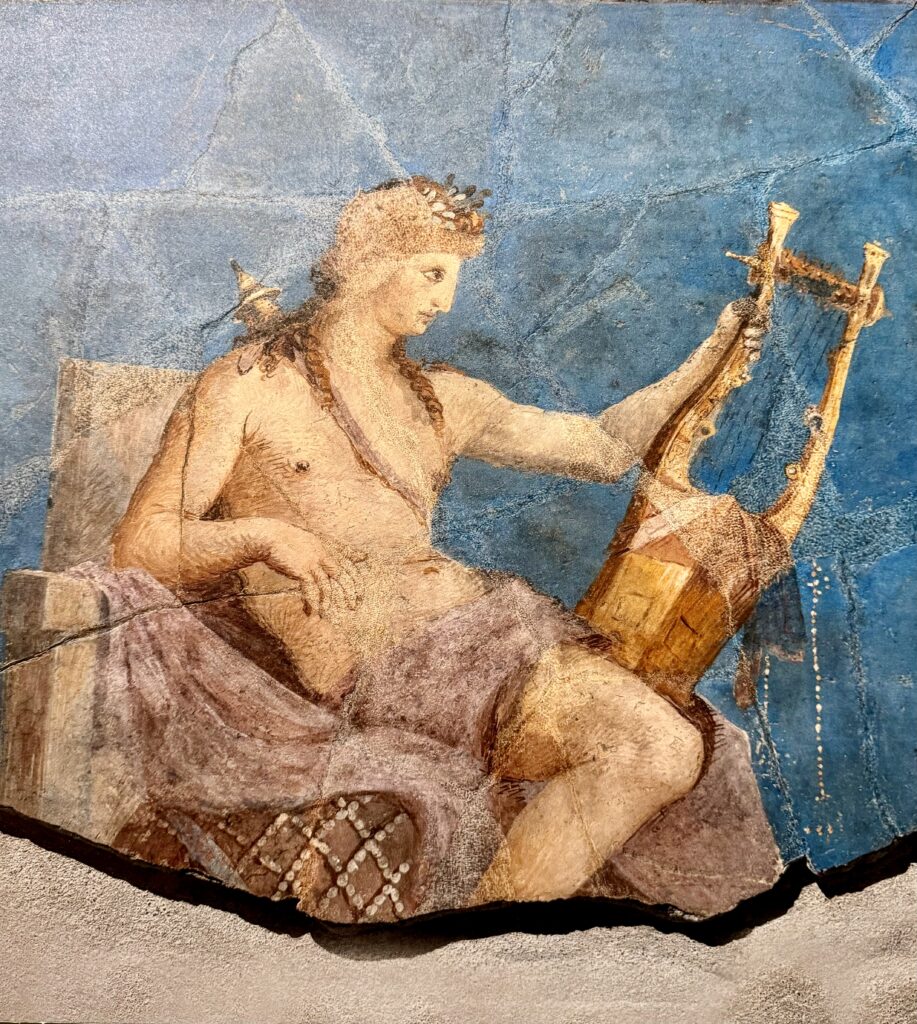
Augustus Room
The Augustus Room is one of my favorite spaces in the museum. It’s filled with frescos, terracotta panels, and statues from the House of Augustus.
Augustus really transformed Palatine Hill.
In 36 BC, he purchased a series of private homes to build his new residence. Though he tried to be relatively modest with his decorations, he did decorate the house with amazing Pompeiian style frescos.
After that, Palatine Hill became the official residence of the Roman emperors.
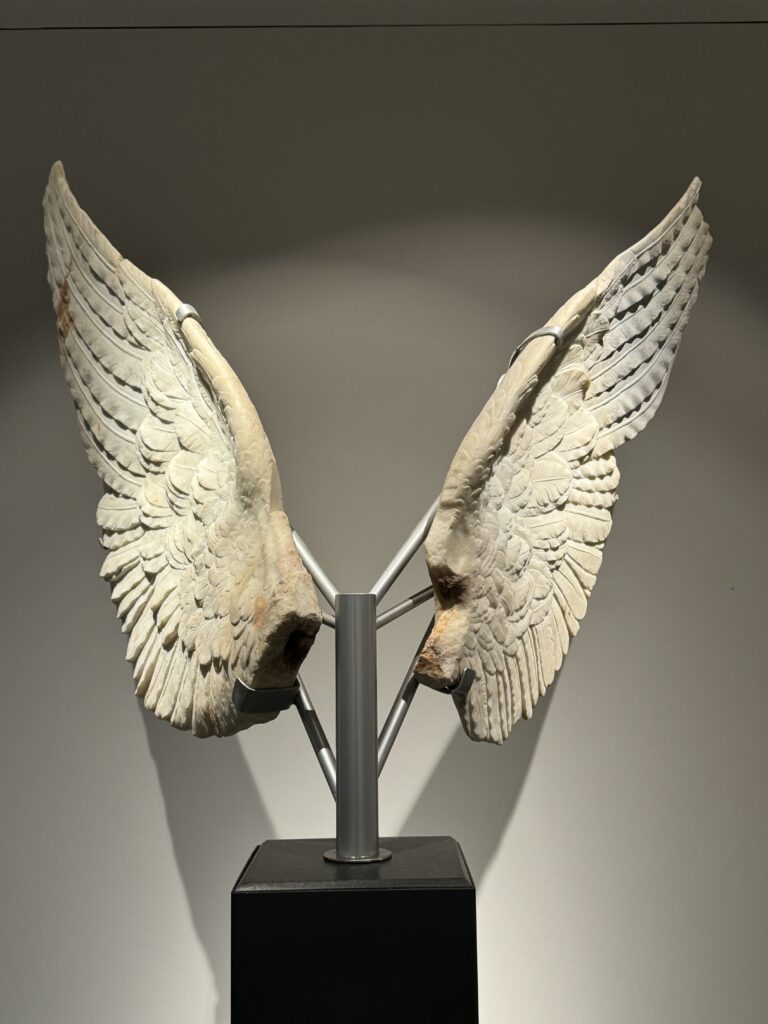
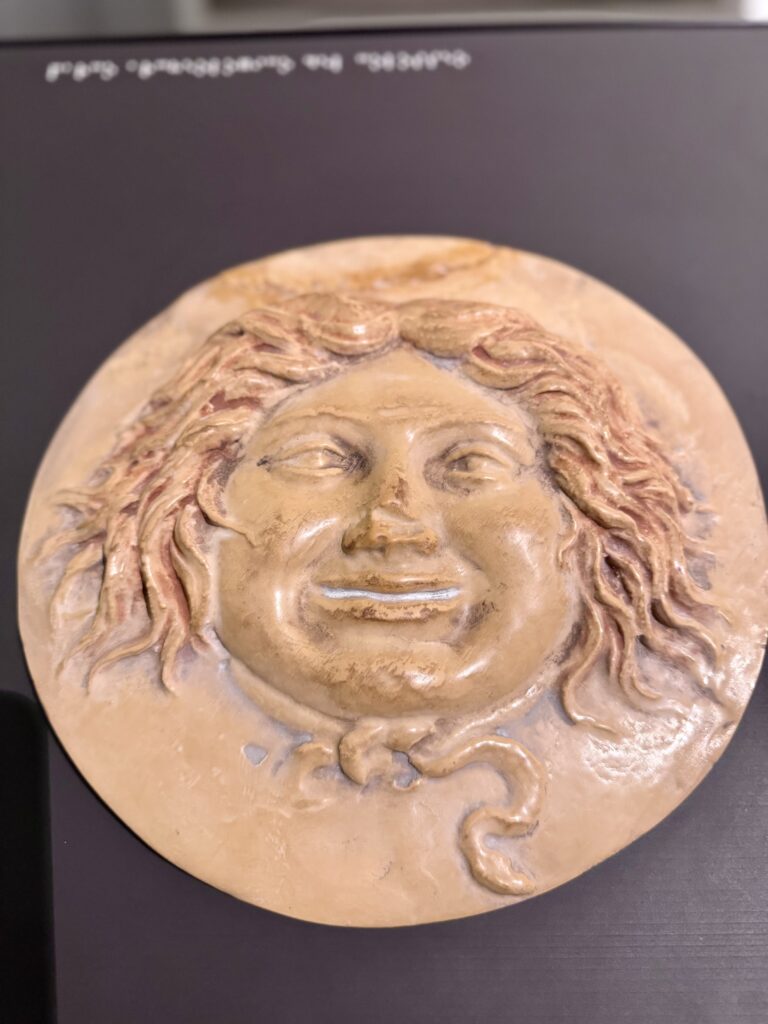
You can’t help but notice the surviving wings from a larger than life statue of Victory, just about to land on the globe. These wings in Greek marble reveal the highly refined craftsmanship of the period.
They were inspired by the bronze statue once in the Cura Julia in the Roman Forum that celebrated Augustus’ victory at Actium. You’ll probably want to take an “angel” selfie here!
Tip: There are another set of wings in Domus Tiberiana.
You’ll also see a wall of terracotta reliefs. They depict the struggle between Apollo (Octavian-Augustus) and Hercules (the defeated Mark Anthony).
>>> Click to book a SUPER ticket to tour the House of Augustus
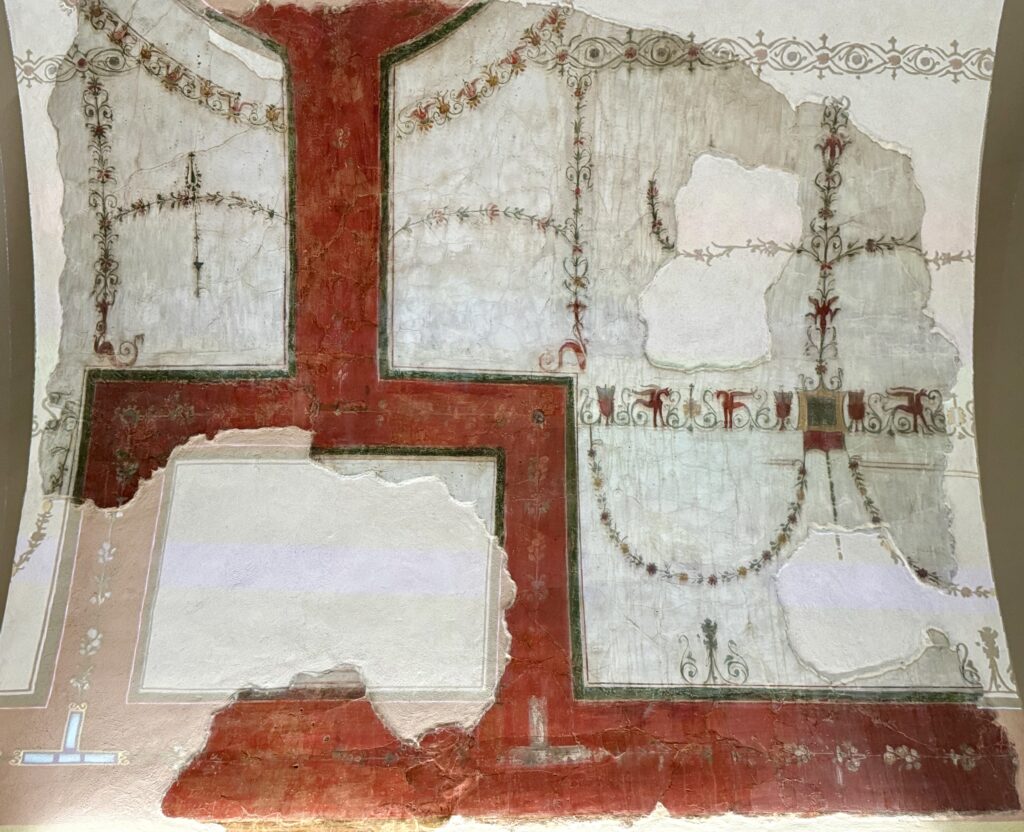
Domus Transitoria
Room 7 is a gorgeous space. It features unique, one-of-a-kind frescos and decorative marble from Nero’s house, Domus Transitoria.
Under Nero, the style and dimensions of imperial architecture underwent a dramatic change.
We know from Suetonius that Nero’s building projects began on Palatine Hill with the construction of Domus Transitoria. Suetonius wrote that: “Everything was covered in gold, precious stones and mother of pearl.”
Significant remains of the palace are under the triclinium of Domus Flavia.
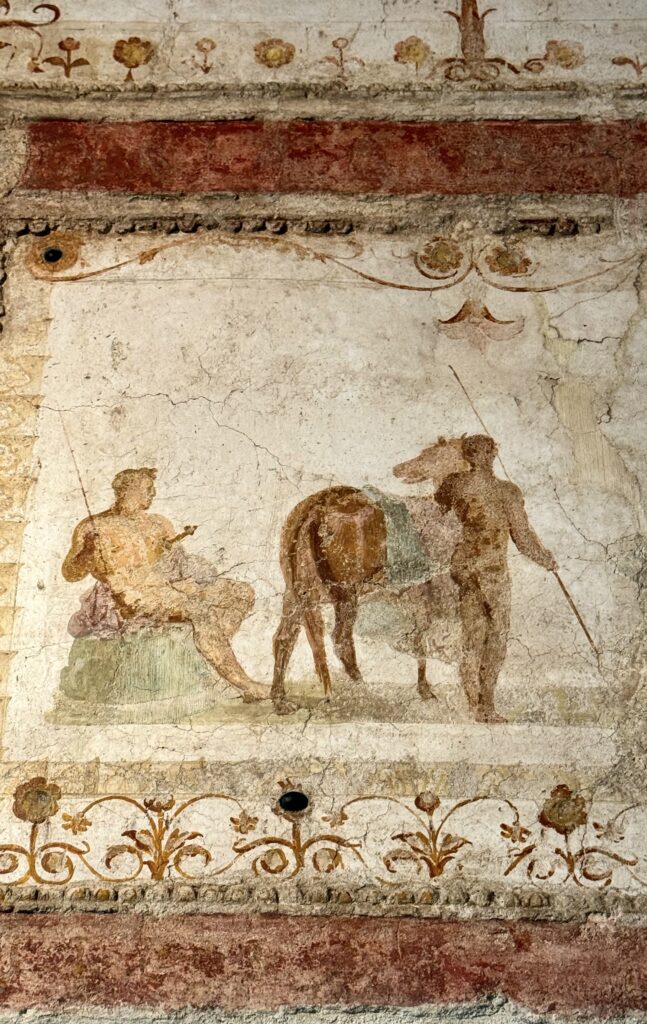
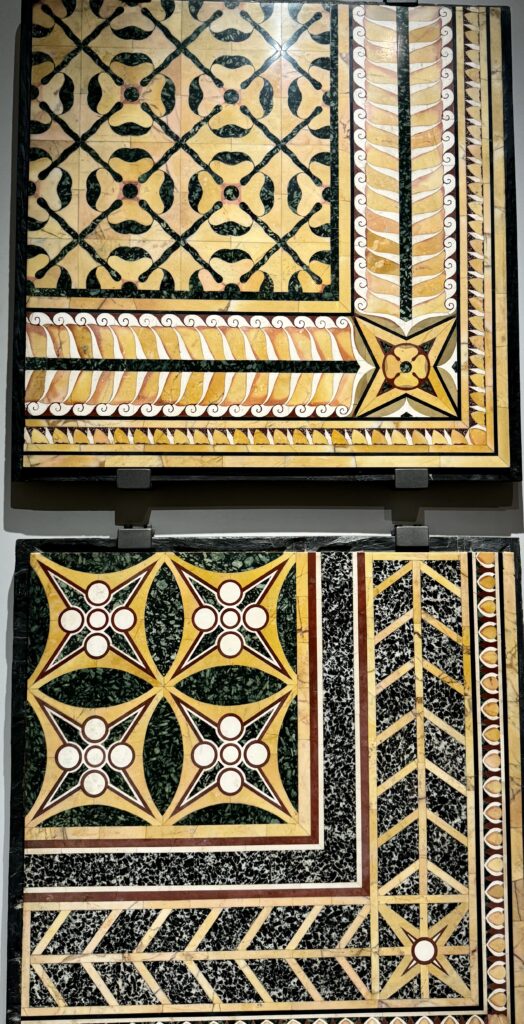
Although Nero decorated his palaces with many Greek sculptures, none of them were found during excavations. His successors removed them.
But you can see paintings, mosaics, and refined marble inlays on display that give you an idea of Nero’s extravagance.
Tip: Domus Tiberiana opened to the public in 2019. But it is temporarily closed as of this writing.
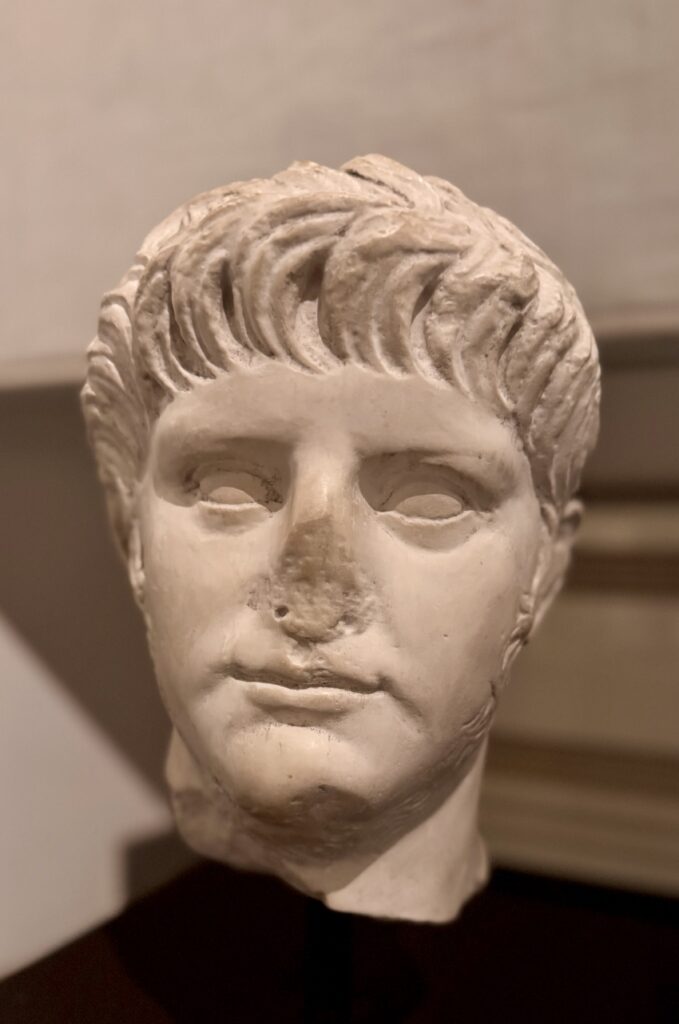
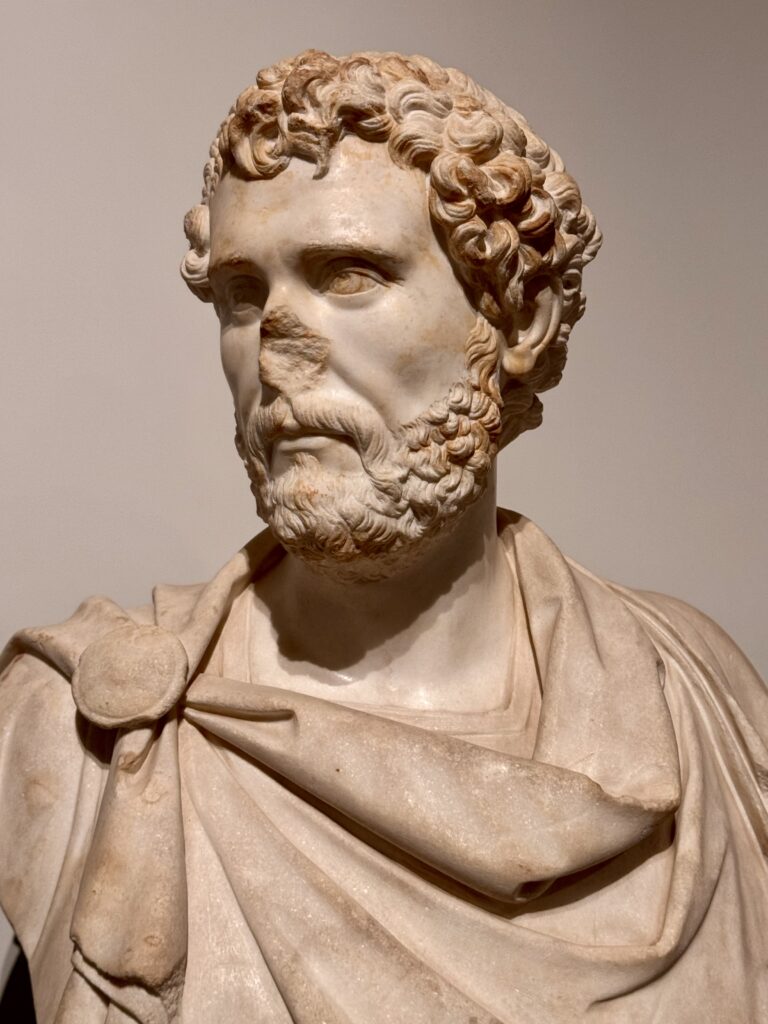
Portrait Busts
Room 9 is chock full of portrait busts of the imperial family. You’ll see portraits of quite a few emperors from the notorious Nero to the last great emperor Trajan.
The bust of Nero is a rare surviving likeness. Upon his death, Nero was damned. All likenesses, and his grand Golden House, Domus Aurea, were destroyed.
In the Julio-Claudian period, the portrait busts were made in a classic Augustan style, with idealized and finely executed features.
Under Claudius, a more realistic style developed. Under Nero, busts became even more expressionistic.
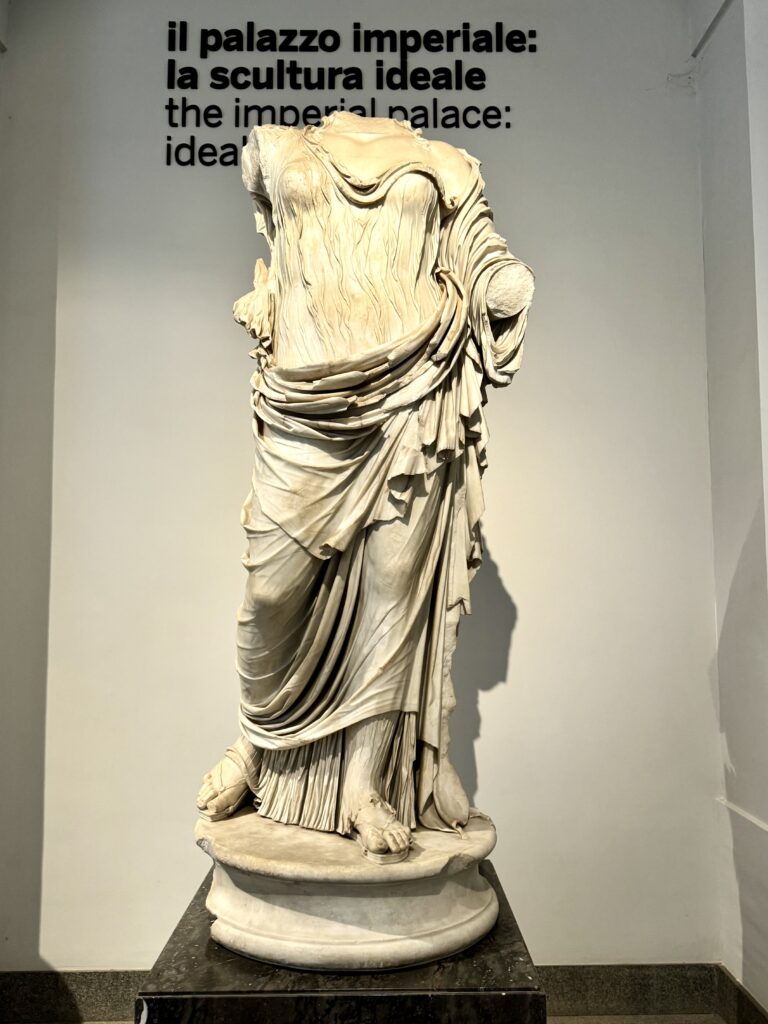
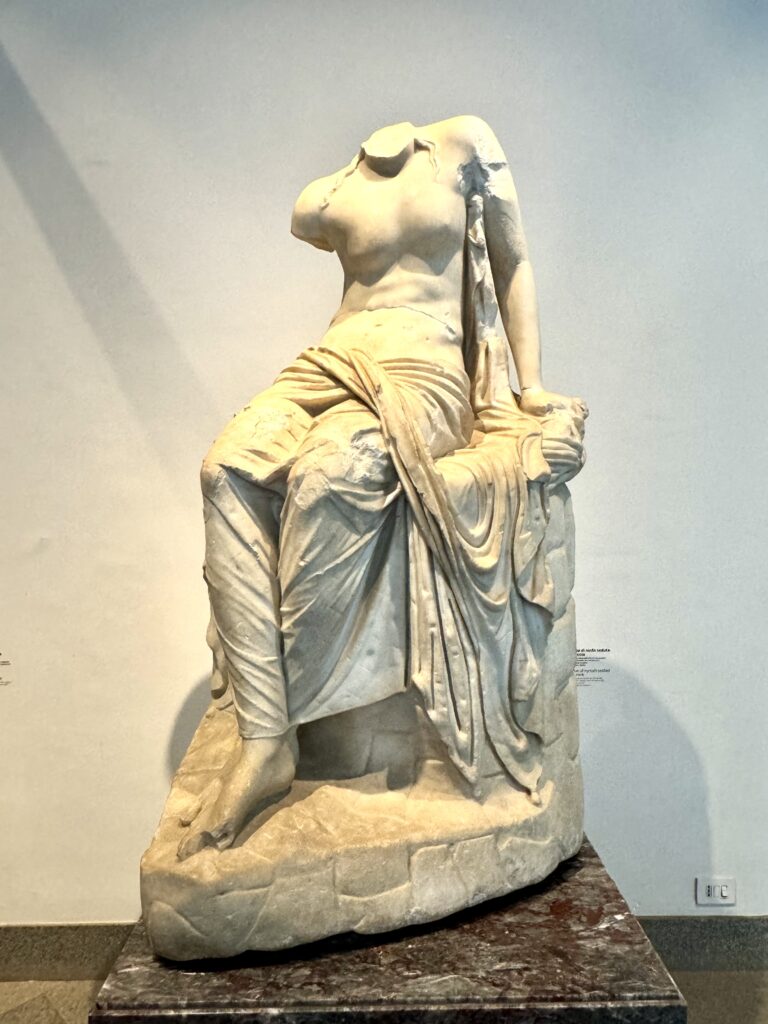
Ideal Sculptures
The “ideal sculptures” from the Flavian Palace, showcased in Room 10, belong to the Flavian dynasty, which included emperors Vespasian, Titus, and Domitian (69-96 AD).
These sculptures were part of the opulent decor of the Domus Flavia, a part of the vast imperial palace complex on the Palatine Hill that served as the official residence of the emperors.
The Domus Flavia was known for its grand architecture, luxurious materials, and the art that adorned its halls and rooms.
The ideal sculptures from this palace included finely crafted representations of deities and mythological figures. They embodied virtues and qualities that the emperors wished to be associated with, such as justice, fortitude, and divine favor.
These works were intended to convey the power, cultural sophistication, and divine right to rule of the Flavian dynasty. They played a crucial role in the visual propaganda of the imperial household.
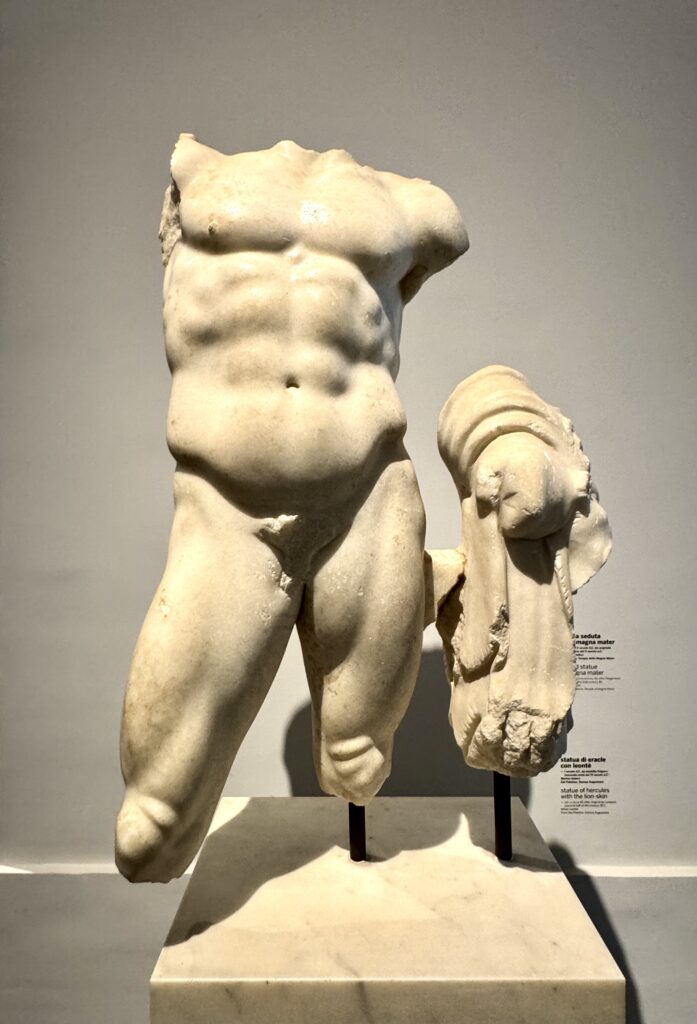
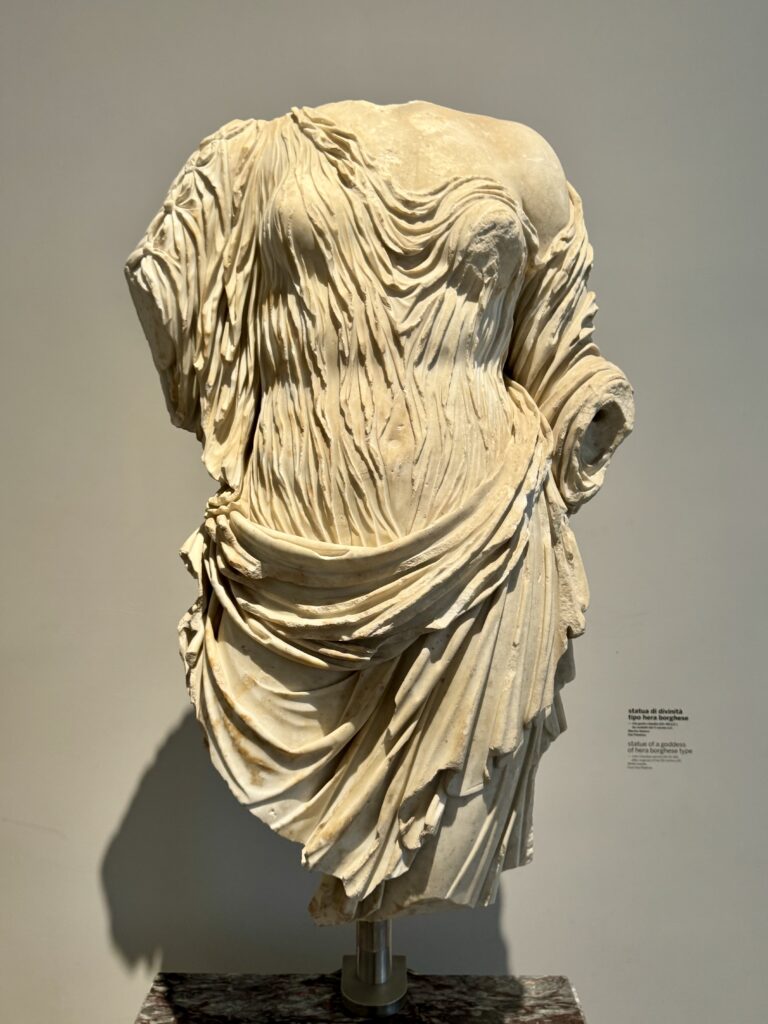
Practical Guide & Tips For The Palatine Museum
Address: Via di San Gregorio 30, Roma
Hours: Open daily from 9:30 am to 3:30 pm. Last admission 3:00 pm.
Tickets: You can only visit the museum with the Rome SUPER Ticket.
How Much Time Do You Need? I think 60-90 minutes is enough to cover the museum at a fairly leisurely pace.
Is The Palatine Museum Worth Visiting?
A definite yes, in my opinion. But especially true if you love archaeology and all things Ancient Rome. The frescos and sculptures were well worth a look.
On the other hand, if you’re crunched for time, the best places to visit on Palatine Hill — hands down — is the House of Augustus.
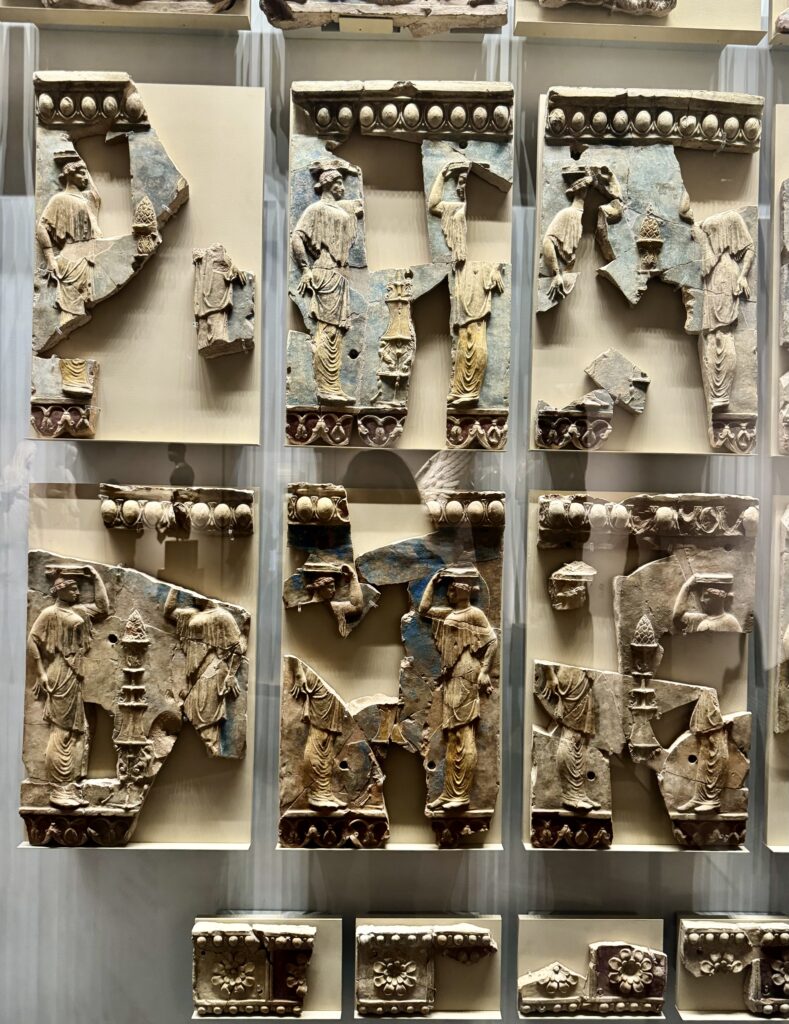
I hope you’ve enjoyed my guide to the Palatine Museum. You may find these other Rome travel guides useful.
- 8 ways to spend 1 day in Rome
- 2 day itinerary for Rome
- 3 day itinerary for Rome
- 4 day itinerary for Rome
- 5 day itinerary for Rome
- Hidden gems in Rome
- Best museums in Rome
- Archaeological sites in Rome
- Guide to Palatine Hill
- Guide to the Roman Forum
- Walking tour of central Rome
Pin it for later.

